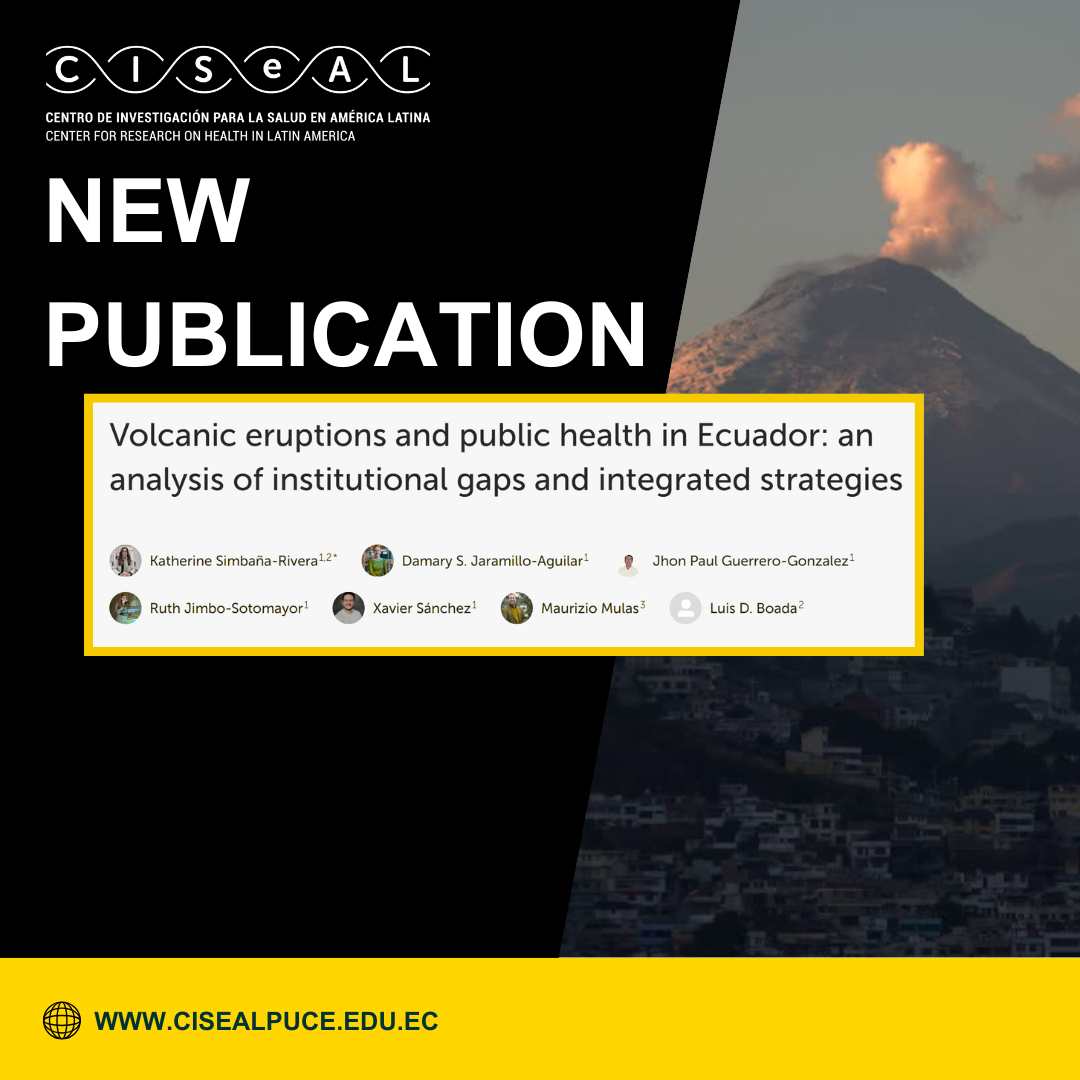 The article, led by Katherine Simbaña-Rivera and developed with the support of Damary S. Jaramillo-Aguilar, Ruth Jimbo-Sotomayor, Jhon Paul Guerrero-Gonzalez, and Xavier Sánchez, researchers from CISeAL, together with other experts, analyzes the preparedness and response of Ecuador’s health system to volcanic activity occurring between 2000 and 2024, in a country characterized by high exposure to this type of natural hazard. Based on an exhaustive documentary review of institutional, regulatory, scientific, and grey literature sources, the study examines the main eruptive events recorded at the Tungurahua, Cotopaxi, Sangay, and Reventador volcanoes, as well as the health impacts and the actions implemented by the institutions responsible for risk management and public health.
The article, led by Katherine Simbaña-Rivera and developed with the support of Damary S. Jaramillo-Aguilar, Ruth Jimbo-Sotomayor, Jhon Paul Guerrero-Gonzalez, and Xavier Sánchez, researchers from CISeAL, together with other experts, analyzes the preparedness and response of Ecuador’s health system to volcanic activity occurring between 2000 and 2024, in a country characterized by high exposure to this type of natural hazard. Based on an exhaustive documentary review of institutional, regulatory, scientific, and grey literature sources, the study examines the main eruptive events recorded at the Tungurahua, Cotopaxi, Sangay, and Reventador volcanoes, as well as the health impacts and the actions implemented by the institutions responsible for risk management and public health.
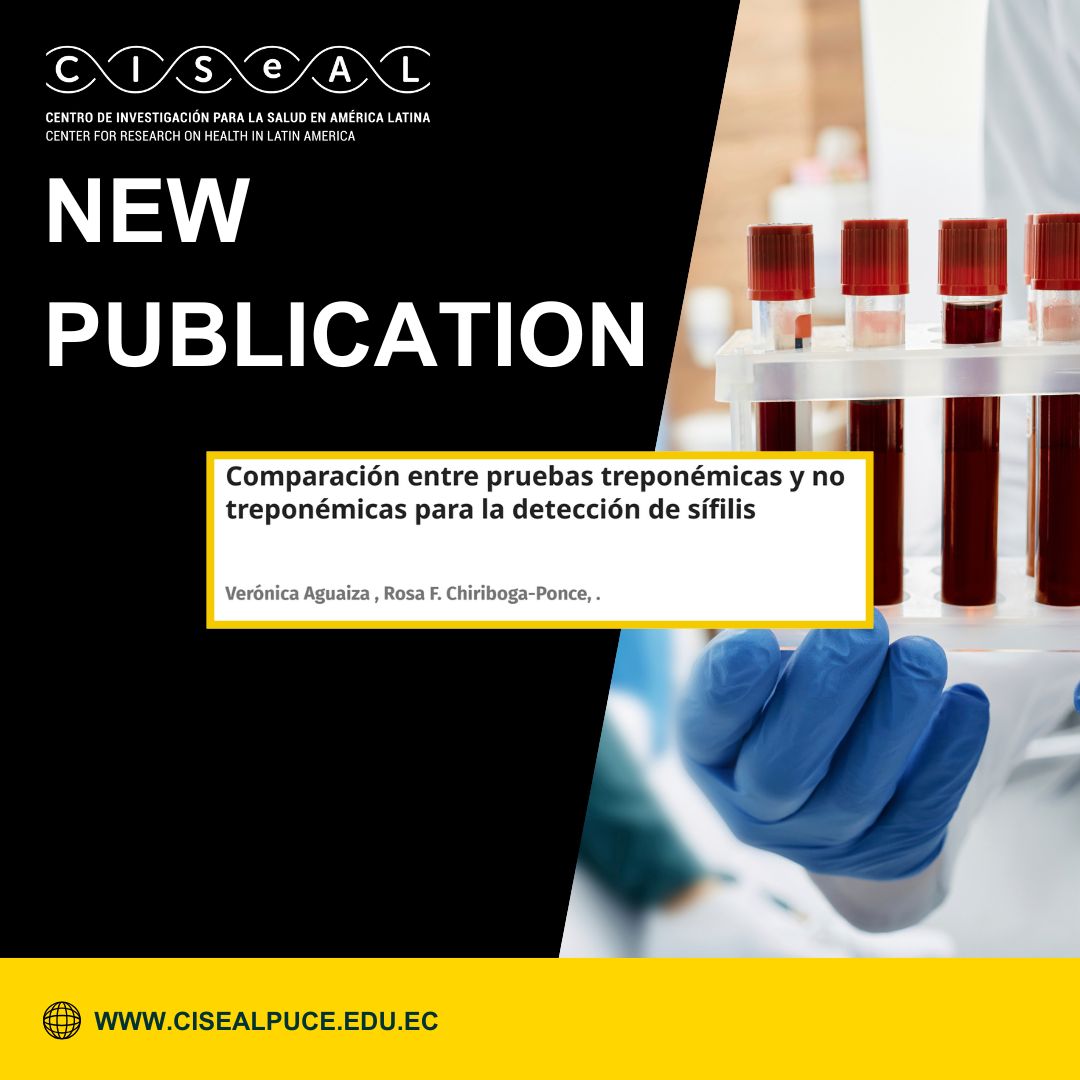 The diagnosis of syphilis continues to rely on two types of serological tests: non-treponemal (NT), used as an initial screening, and treponemal (T), used as confirmatory tests. However, the relationship between both types and their ability to accurately detect the infection remains under analysis, especially in contexts where transfusion safety is critical. With this purpose, Verónica Aguaiza, Bq, and Rosa Chiriboga, MPH, from the Reference Unit for Blood Banks (URBS), evaluated 384 initially reactive samples using VDRL, and subsequently subjected them to VDRL, ELISA, CLIA, and FTA-ABS as the confirmatory reference. The study showed that concordance between NT and T tests was moderate, reaching percentages between 76% and 83%, and that this concordance decreased even further when compared to FTA-ABS, with values ranging from 44.2% to 61.9%. Although all tests demonstrated high sensitivities, significant differences emerged in their predictive value: VDRL presented the highest rate of false positives (up to 94.52%), while the automated treponemal CLIA test achieved the best positive predictive value (95.27%) and the strongest overall performance.
The diagnosis of syphilis continues to rely on two types of serological tests: non-treponemal (NT), used as an initial screening, and treponemal (T), used as confirmatory tests. However, the relationship between both types and their ability to accurately detect the infection remains under analysis, especially in contexts where transfusion safety is critical. With this purpose, Verónica Aguaiza, Bq, and Rosa Chiriboga, MPH, from the Reference Unit for Blood Banks (URBS), evaluated 384 initially reactive samples using VDRL, and subsequently subjected them to VDRL, ELISA, CLIA, and FTA-ABS as the confirmatory reference. The study showed that concordance between NT and T tests was moderate, reaching percentages between 76% and 83%, and that this concordance decreased even further when compared to FTA-ABS, with values ranging from 44.2% to 61.9%. Although all tests demonstrated high sensitivities, significant differences emerged in their predictive value: VDRL presented the highest rate of false positives (up to 94.52%), while the automated treponemal CLIA test achieved the best positive predictive value (95.27%) and the strongest overall performance.
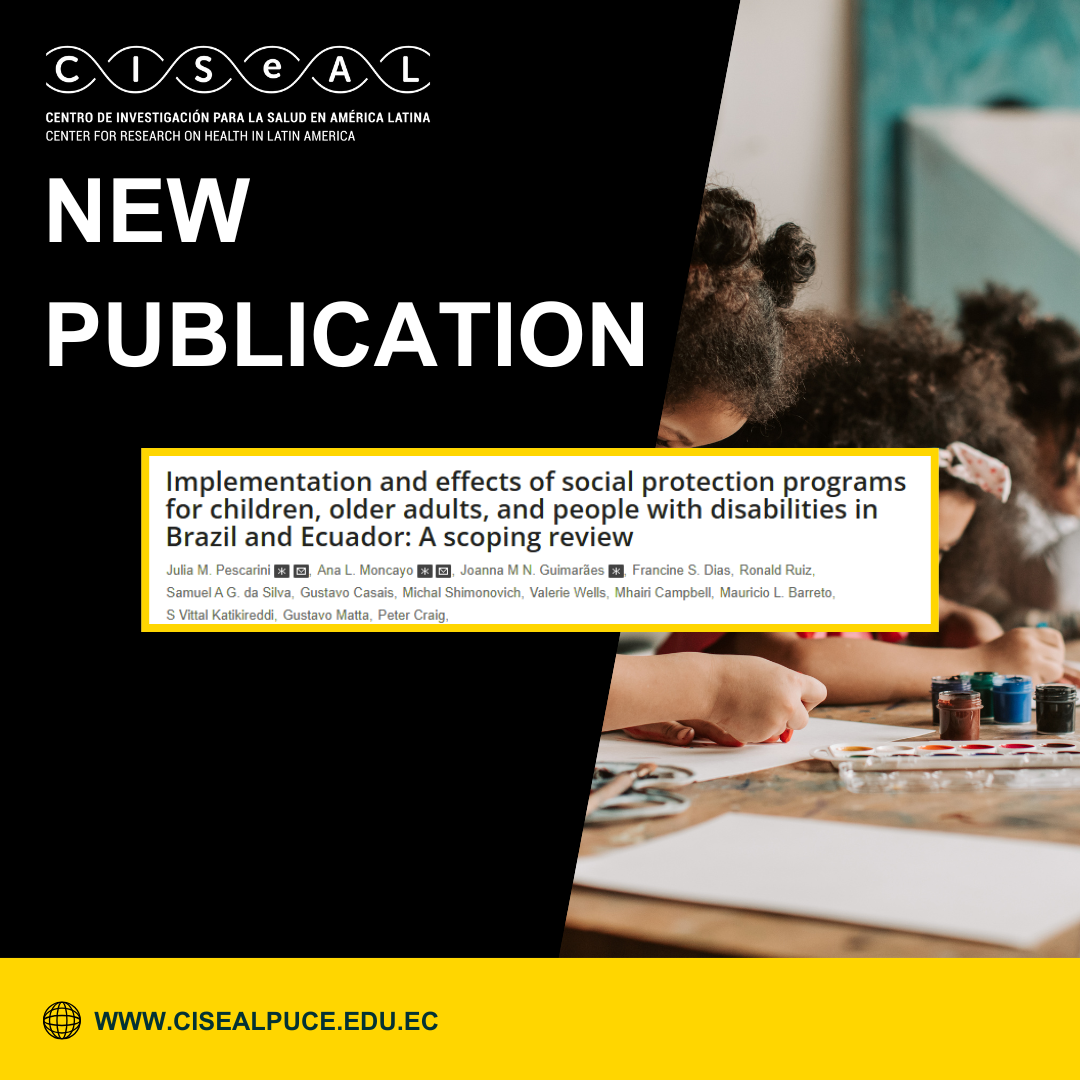 Our Principal Investigator, Dr. Ana Lucía Moncayo, together with Dr. Julia M. Pescarini from the Center for Data and Knowledge Integration for Health (Cidacs) – Brazil, took part in a collaborative study in which they share both first and corresponding authorship. The article, published in PLOS Global Public Health, is titled “Implementation and effects of social protection programs for children, older adults, and people with disabilities in Brazil and Ecuador: A scoping review.”
Our Principal Investigator, Dr. Ana Lucía Moncayo, together with Dr. Julia M. Pescarini from the Center for Data and Knowledge Integration for Health (Cidacs) – Brazil, took part in a collaborative study in which they share both first and corresponding authorship. The article, published in PLOS Global Public Health, is titled “Implementation and effects of social protection programs for children, older adults, and people with disabilities in Brazil and Ecuador: A scoping review.”
This work is part of the SEDHI project (Social and Environmental Determinants of Health Inequalities) and examines how social protection programs targeting children, older adults, and people with disabilities living in poverty have been implemented and what their effects have been in Brazil and Ecuador. The review explores the link between poverty and health in Latin America, where long-standing inequality has driven the creation of policies such as Bolsa Família in Brazil and the Bono de Desarrollo Humano in Ecuador. These programs have helped reduce poverty and improve indicators of education, economic inclusion, and health, although coverage and sustainability gaps persist.
 The study represents the first report on the intestinal bacterial microbiota of Panstrongylus chinai, a secondary vector of Chagas disease in southern Ecuador. This research was conducted by the CISeAL team under the direction of Dr. Anita Villacís, with the objective of characterizing the microbial diversity present in the gut of this species and exploring its possible relationship with the transmission of Trypanosoma cruzi.
The study represents the first report on the intestinal bacterial microbiota of Panstrongylus chinai, a secondary vector of Chagas disease in southern Ecuador. This research was conducted by the CISeAL team under the direction of Dr. Anita Villacís, with the objective of characterizing the microbial diversity present in the gut of this species and exploring its possible relationship with the transmission of Trypanosoma cruzi.
Samples were collected from three rural communities in the Calvas canton, Loja province (Guara, Chaquizhca, and Bellamaría), in both domestic and peridomestic environments. The insects were subsequently processed and analyzed using molecular techniques at CISeAL (PUCE) to identify the presence of T. cruzi as well as the composition of the intestinal bacterial community through amplification and sequencing of the 16S rRNA gene.
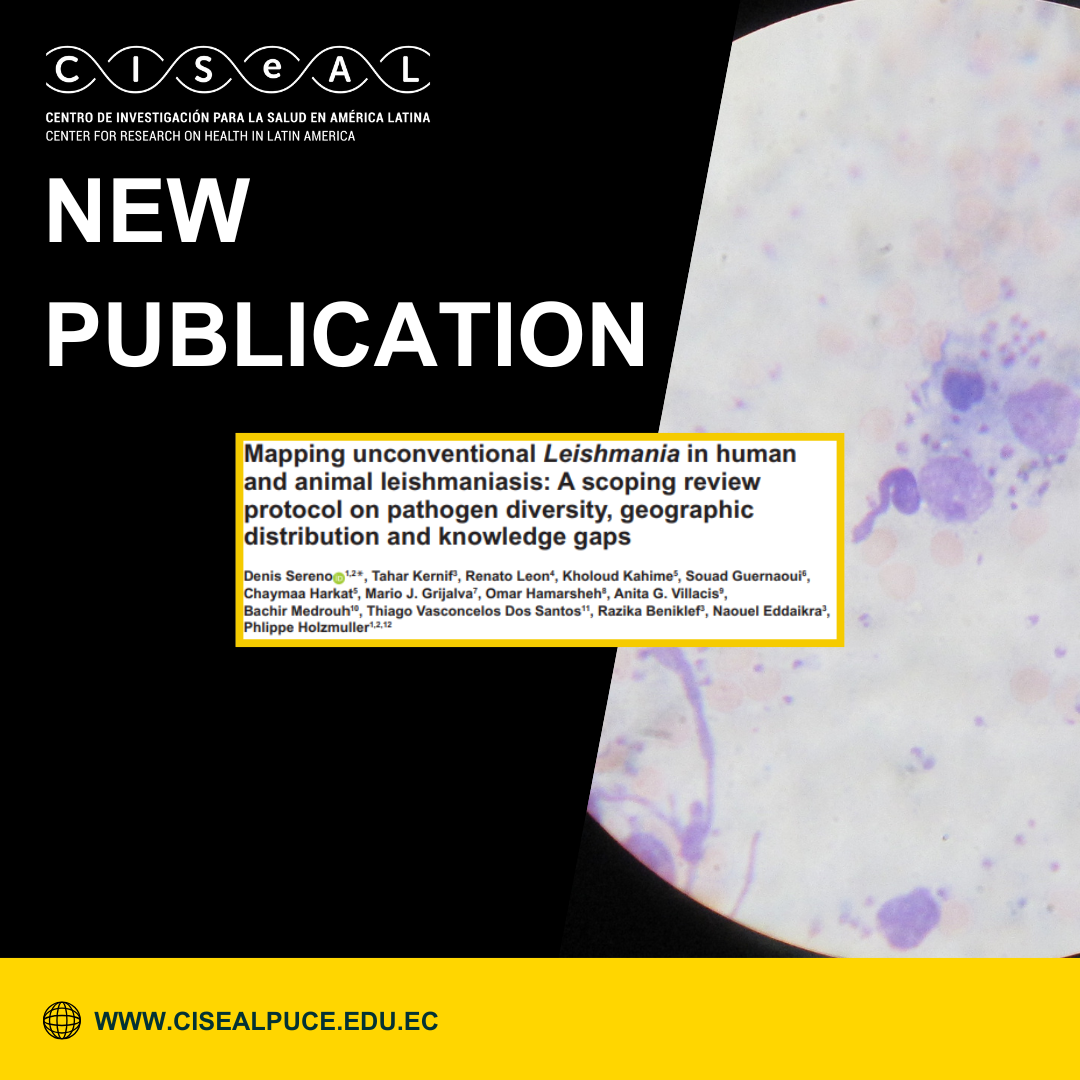 The research led by Dr. Denis Sereno, researcher at the IRD (Institut de Recherche pour le Développement), in collaboration with Dr. Mario Grijalva and Dr. Anita Villacís, principal investigators at CISeAL, addresses an emerging challenge in global public health: the diversity and behavior of non-conventional Leishmania species that cause infections in both humans and animals.
The research led by Dr. Denis Sereno, researcher at the IRD (Institut de Recherche pour le Développement), in collaboration with Dr. Mario Grijalva and Dr. Anita Villacís, principal investigators at CISeAL, addresses an emerging challenge in global public health: the diversity and behavior of non-conventional Leishmania species that cause infections in both humans and animals.
Traditionally, leishmaniases have been attributed to a limited group of species (such as L. donovani, L. infantum, L. major, or L. tropica), each associated with a well-defined clinical presentation. However, advances in molecular diagnostics have revealed a more complex scenario. Recent cases have identified atypical or emerging species, such as those belonging to the subgenus Mundinia (L. martiniquensis, L. orientalis), as well as unusual clinical manifestations in classical species—challenging traditional models of diagnosis and surveillance.
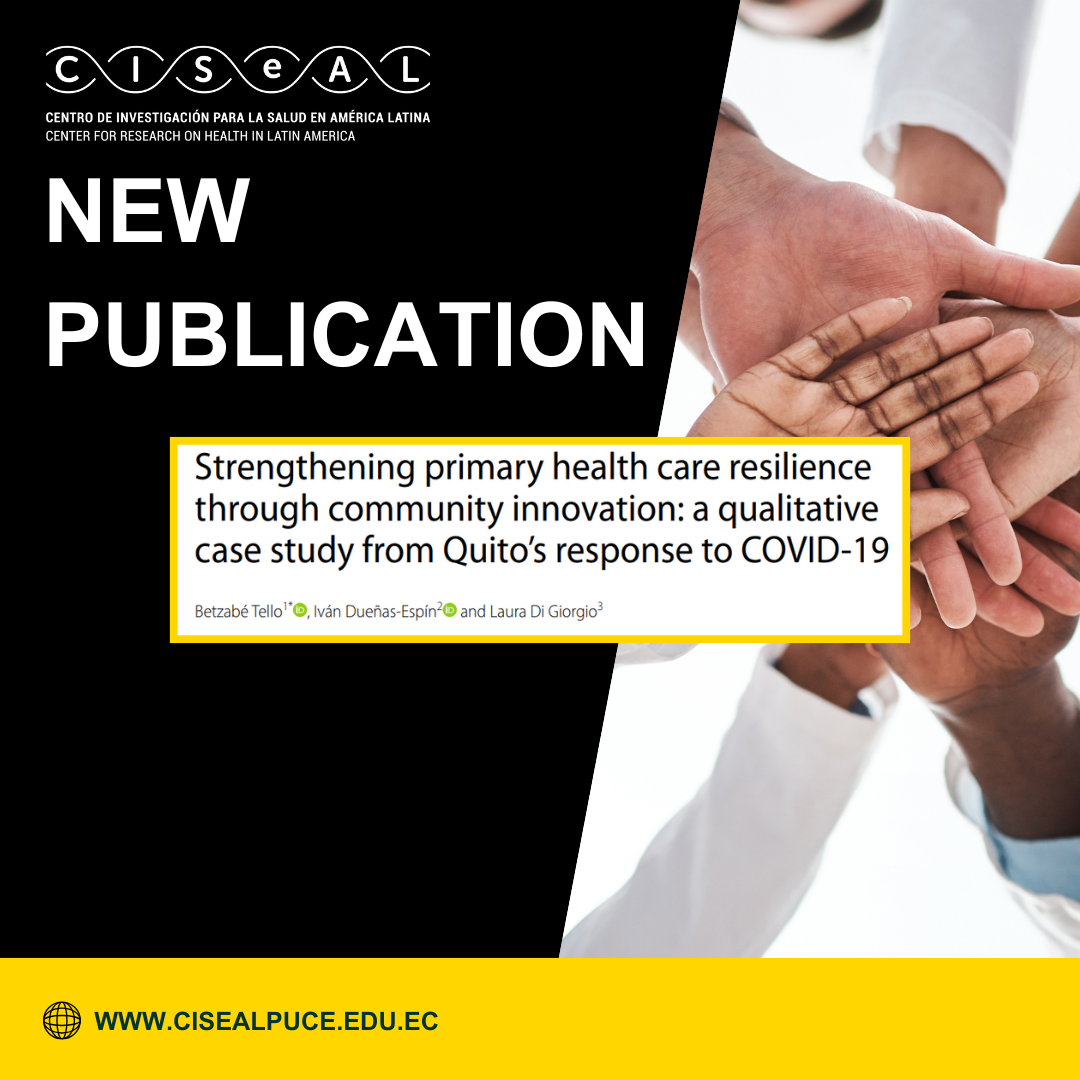 After the COVID-19 pandemic, the city of Quito faced the enormous challenge of transforming its primary health care system, which had been weakened by the health emergency and hospital overload. The following study analyzes how the city reconfigured its model of Community Primary Health Care (CPHC) during and after the pandemic, becoming a regional reference in health resilience and local governance. Entitled “Strengthening primary health care resilience through community innovation: a qualitative case study from Quito’s response to COVID-19”, it was led by Dr. Betzabé Tello, principal researcher at CISeAL-PUCE, and received support from the World Bank as part of its technical assistance agenda to strengthen resilient primary health care systems in Latin America.
After the COVID-19 pandemic, the city of Quito faced the enormous challenge of transforming its primary health care system, which had been weakened by the health emergency and hospital overload. The following study analyzes how the city reconfigured its model of Community Primary Health Care (CPHC) during and after the pandemic, becoming a regional reference in health resilience and local governance. Entitled “Strengthening primary health care resilience through community innovation: a qualitative case study from Quito’s response to COVID-19”, it was led by Dr. Betzabé Tello, principal researcher at CISeAL-PUCE, and received support from the World Bank as part of its technical assistance agenda to strengthen resilient primary health care systems in Latin America.
The study aimed to document how Quito transitioned from a reactive, hospital-centered model to a community-based, preventive, and territorial one, grounded in the social determinants of health and citizen participation. To achieve this, a qualitative approach was applied, including a documentary review of institutional sources, municipal reports, legal frameworks, and accountability documents from 2014 to 2024, complemented by in-depth interviews with health professionals, decision-makers, and administrative staff. This approach allowed for an understanding of both the institutional structure and the implementation processes of the model throughout the Metropolitan District.

CISeAL researchers Carolina Portero, M.Sc., in collaboration with Dr. María Raquel Marchán-Rivadeneira, have developed a study that proposes an innovative strategy to combat SARS-CoV-2 infections through the development of synthetic probiotic bacteria capable of producing and releasing neutralizing nanoantibodies directly at the site of infection. The work is based on the premise that, although vaccines have been fundamental in controlling the pandemic, there is still a need for antiviral therapies that block early stages of the viral cycle, such as the binding of the RBD domain of the spike protein to the human ACE2 receptor, a key process for the virus to enter cells. In this context, nanoantibodies, derived from camelid antibodies, offer advantages over monoclonal antibodies due to their small size, stability, and ease of genetic manipulation, but they face limitations associated with their rapid degradation and the need for repeated administration. To overcome these challenges, a recombinant strain of Lactococcus lactis, a safe and widely used probiotic, was designed to act as a biological vehicle for producing and carrying nanoantibodies. Through genetic engineering, vectors capable of expressing the H11-D4 and H11-H4 nanoantibodies anchored to the bacterial surface were constructed, optimizing the secretion and fixation system to ensure their stability and external exposure.



